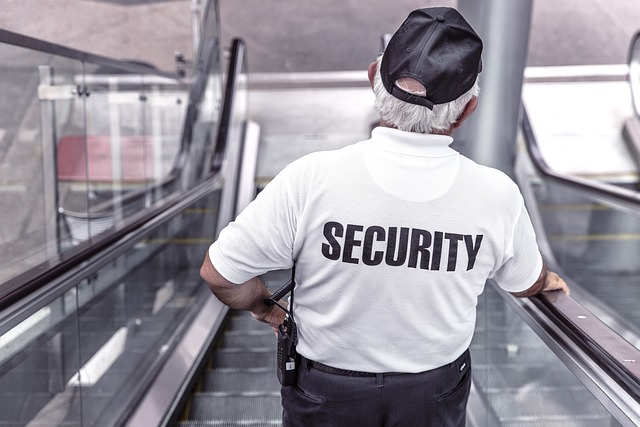To effectively enhance your home's security with a surveillance camera system, it's critical to strategically place cameras for optimal coverage of entry points, high-traffic areas, valuable assets locations, and outdoor spaces. High-definition cameras with wide-angle lenses and infrared capabilities for night vision are recommended for both indoor and outdoor use. Ensure your chosen cameras integrate well with your existing home security system and offer real-time alerts, motion activation, and remote access features. Professional installation is advised to ensure secure mounting points, unobstructed views, and effective elimination of blind spots. Regular maintenance, including lens cleaning and firmware updates, along with routine testing for operational integrity and image quality, will maintain the system's effectiveness. Advanced features like night vision, motion detection, and remote monitoring via apps enhance your home security by providing real-time activity updates, regardless of your location, thereby safeguarding your property and peace of mind.
When fortifying your home against potential intrusions, strategic surveillance camera installation plays a pivotal role. This article delves into the essentials of assessing your home’s security landscape, pinpointing critical areas for camera placement to enhance visibility and deter crime. We’ll guide you through selecting the optimal type of camera to suit your specific needs, ensuring comprehensive coverage. Furthermore, a step-by-step professional installation process tailored for home security is outlined to help you set up your system effectively. Additionally, we offer tips on maximizing the benefits of your surveillance setup for sustained protection and peace of mind. Home Security is a multifaceted approach, and understanding its components is key to safeguarding your residence.
- Assessing Your Home's Security Needs: Identifying Key Areas for Surveillance Camera Installation
- Choosing the Right Type of Camera for Optimal Visibility and Coverage
- Step-by-Step Guide to Professional Surveillance Camera Installation for Home Security
- Maximizing the Benefits of Your Surveillance System: Tips for Effective Monitoring and Maintenance
Assessing Your Home's Security Needs: Identifying Key Areas for Surveillance Camera Installation

When fortifying your home against potential security threats, a strategic placement of surveillance cameras is paramount in your home security arsenal. To effectively assess and address your home’s unique vulnerabilities, begin by identifying areas that are most susceptible to intrusion or vandalism. Typical high-risk zones often include entry points such as front and back doors, garages, windows, and any other points of ingress or egress. High-traffic areas within the home, like living rooms and hallways, also warrant consideration for surveillance, as do valuable asset locations, such as safes, home offices, and entertainment systems. Additionally, outdoor spaces like driveways, pathways, and backyards should not be overlooked, as they provide a clear view of approaches to your property and can deter criminals before they even reach your home.
Investing in home security cameras is not solely about deterring potential trespassers; it’s also about capturing clear, actionable footage for law enforcement should an incident occur. To maximize the effectiveness of your surveillance setup, ensure cameras are positioned to cover blind spots and offer wide-angle views of key areas. Motion-activated cameras can be particularly useful, as they provide real-time alerts and start recording upon detecting movement, enhancing your home’s security without the need for constant monitoring. By carefully selecting camera types and installation locations, you can create a comprehensive surveillance system tailored to your home’s specific security needs.
Choosing the Right Type of Camera for Optimal Visibility and Coverage

When considering home security, selecting the appropriate type of surveillance camera is paramount for optimal visibility and coverage. High-definition cameras should be a priority due to their ability to provide clear, detailed footage that can aid in identifying individuals or activities. These cameras are particularly useful for monitoring entry points like doors and windows, as well as high-traffic areas within the home. In addition to resolution, the camera’s field of view is crucial; wide-angle lenses can capture larger areas, reducing the number of cameras needed and simplifying your coverage strategy.
Moreover, the type of lens and sensor a camera employs can significantly impact its effectiveness. Bullet or dome cameras with infrared capabilities are ideal for outdoor surveillance, offering clear night vision and weather resistance. On the other hand, indoor cameras might prioritize discreetness and wider viewing angles to monitor larger spaces like living rooms or hallways. It’s also essential to consider the camera’s compatibility with your existing home security system, as well as its ability to connect to a central monitoring service for real-time alerts and remote access. By carefully choosing the right type of camera, homeowners can enhance visibility, ensure adequate coverage, and fortify their home security measures.
Step-by-Step Guide to Professional Surveillance Camera Installation for Home Security

When enhancing your home security, professional surveillance camera installation is a key step in deterring criminal activity and ensuring the safety of your property. To begin with, assess your home’s vulnerabilities and determine the strategic placement of cameras for optimal coverage. High-traffic areas like entrances, hallways, and valuables storage spaces are prime locations for surveillance. Ensure that cameras have a clear line of sight and are positioned to avoid blind spots.
Once you’ve decided on the camera locations, it’s time to install them. Start by selecting robust mounting points, ensuring they are secure and out of reach. Use high-quality brackets and hardware appropriate for the camera’s weight and the surface it will adhere to. Connect the cameras to power sources, making sure to utilize surge protectors to safeguard your equipment. For wireless options, verify that they have a strong and stable connection to your Wi-Fi network. Next, configure each camera with your preferred home security system software, setting up motion detection, recording schedules, and other desired features. Finally, test the cameras thoroughly to ensure they are capturing clear, unobstructed footage. It’s advisable to consult with or hire a professional for this process to guarantee proper installation and optimal functionality of your surveillance system, thereby enhancing home security and peace of mind.
Maximizing the Benefits of Your Surveillance System: Tips for Effective Monitoring and Maintenance

To effectively leverage your surveillance camera system as part of your home security strategy, it’s crucial to ensure optimal placement and consistent maintenance. Strategic positioning is key; cameras should cover all critical entry points, blind spots, and areas prone to activity. Position them at heights that offer a wide field of view without capturing unnecessary background clutter that can hinder identification of individuals or events. Additionally, angle the cameras to prevent direct sunlight or artificial lighting glare that can wash out images.
Regular maintenance is equally important for home security. This includes cleaning lenses to remove smudges and fingerprints that can obscure vision, as well as ensuring all devices are functioning correctly, with up-to-date firmware to protect against cyber threats. Regularly test your system to verify its operational integrity and to confirm that recordings are clear and time-stamped accurately. Furthermore, consider investing in systems with night vision capabilities to monitor your property 24/7. By integrating motion-activated alerts and remote access through a secure app, you can stay informed of activities at your home even when you’re away, further enhancing your home security measures.
In conclusion, fortifying your home’s security with strategically placed surveillance cameras is a prudent investment in your peace of mind. By carefully assessing your property’s vulnerabilities and selecting the optimal camera types for coverage, you can create a robust home security system. The step-by-step guide provided offers a clear path to professional installation, ensuring your cameras are not just functional but also positioned to maximize visibility. Additionally, maintaining your system through consistent monitoring and upkeep is key to harnessing its full potential. With these strategies in place, your home security will be bolstered, offering a deterrent against potential intruders and providing you with the clarity and confidence needed to safeguard what matters most.
